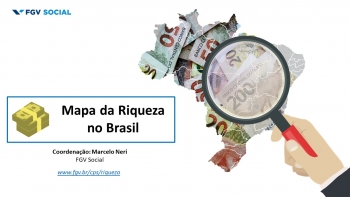Key Questions: Where are the richest in Brazil? How has the pandemic affected overall inequality and the geographic distribution of the nation's wealth?
More Unequal - Income inequality in Brazil is even greater than imagined. This is the main conclusion from joining the individual Personal Income Tax (PIT) database to that of the Continuous Pnad: the Gini index reached 0.7068 in 2020, well above the 0.6013 calculated only by the continuous Pnad. Every 0.03 point equals a large change in inequality. For the calculation of the Gini, the closer the index is to 1, the greater the inequality.If income distribution photography is problematic, so is the pandemic movie. Even with Emergency Aid, contrary to what was believed, Brazilian inequality did not fall during the pandemic. By the usual approach, the Gini would have fallen from 0.6117 to 0.6013, whereas in the combination of bases the Gini rises from 0.7066 to 0.7068. This is because the losses of the richest (of the 1%+ was -1.5%) were less than half of those of the Brazilian middle class (-4.2%), the big loser of the pandemic.
Objective: This study maps top income flows and asset stocks of the richest Brazilians based on the last available PIT (IRPF) and population estimates. This analysis is useful for designing reforms in income tax and wealth tax policies.
High Income - Places in Brazil with the highest PIT income per inhabitant are: Federation Units - 1. Brasília (R$ 3148) 2. São Paulo (R$ 2063) and 3. Rio de Janeiro (R$ 1754); State Capitals: 1. Florianópolis (R$ 4215), 2. Porto Alegre (R$ 3775) and Vitória (R$ 3736); Municipalities with more than 50,000 inhabitants: 1. Nova Lima in Grande BH (R$ 8897), 2. Santana do Parnaíba/SP (R$ 5791), 3. São Caetano do Sul (R$ 4698), 4. Florianópolis, 5 .Niterói (R$4192), 6. Santos (R$3783).
Wealth - The Federation Unit with the lowest declaration of wealth per inhabitant is Maranhão (R$6.300). At the other extreme is the Federal District (R$95,000). But even within the capital of the country there is a lot of concentration of wealth, led by Lago Sul (R$1.4 million). The PIT income per inhabitant in Lago Sul is R$ 23,241, nearly three times higher than the richest municipality in Brazil, which is Nova Lima in Greater Belo Horizonte (R$ 8,897).
Methodology – The Personal Income Tax (PIT) data generated by the Federal Revenue of Brazil (IRPF/RFB) allow us to capture the income of the richest Brazilians, which data from household surveys traditionally used in studies on poverty and inequality. Thus, we can think of the criteria for income tax declaration as a line of wealth that allows identifying residents in the country with greater purchasing power.
Interactive rankings and maps - In addition to the overflight maps and tables, the research page provides interactive rankings to facilitate the analysis of information on levels and variations in income and wealth between years. These devices allow sorting information and doing a quick search of any location according to the user's needs, such as the municipalities of your State. Example: the Top 10 in SP start in Santana do Parnaíba and go to Campos do Jordão.
All the research materials can be accessed on the FGV Social website.
Contact: (+5521) 3799-2320 / marcelo.neri@fgv.br





